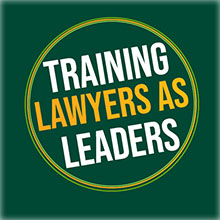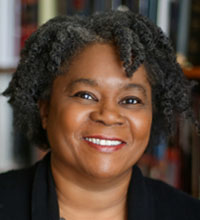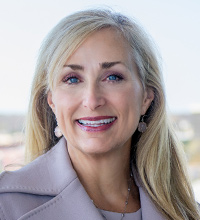By: Ryan Golden, Baylor Law 3L

Few leaders have made decisions as momentous or widely varied as Dwight D. Eisenhower. Through his decades of service to America—first, as an accomplished general who led the Allied army to victory during World War II and later, as the 34th President of the United States during the Cold War—Dwight D. Eisenhower personified the qualities of successful leadership.
Baylor Law recently hosted an interview with President Eisenhower’s granddaughter, Susan Eisenhower, a distinguished Washington D.C. policy strategist, security expert, and author. In her book, How Ike Led, Susan Eisenhower details the qualities that made her grandfather the great leader he is remembered for being today. Author and attorney Talmage Boston, who interviewed Susan Eisenhower for the online event, described How Ike Led as a “textbook on leadership.”
How Ike Led may not be the only leadership “textbook” authored by an Eisenhower, however. In 1965, President Eisenhower authored an essay on leadership that was published in the Reader’s Digest. In that essay, President Eisenhower described the “handful of known qualities which I am convinced are the essence of leadership[,]” based on his observations of other renowned leaders, such as Sir Winston Churchill and Gen. George C. Marshall. According to Eisenhower, the essential leadership qualities include: Selfless Dedication, Courage and Conviction, Fortitude, Humility, Thorough Homework, and the Power of Persuasion.
Based on Susan Eisenhower’s discussion of her grandfather, it is clear President Eisenhower possessed many of these key traits. More than fifty years after President Eisenhower’s death, these qualities continue to remain relevant in today’s societal and political climate.
The first—and “perhaps the greatest”—quality Eisenhower described was selfless dedication. In his essay, Eisenhower wrote: “Any leader worth his salt must of course possess a certain amount of ego, a justifiable pride in his own accomplishments. But if he is a truly great leader, the cause must predominate over self.” In How Ike Led, Susan Eisenhower addresses this concept, writing that President Eisenhower knew when to suppress and when to deploy his ego. By this, she means that Eisenhower possessed a talent for knowing which fights to pursue and which fights to let go. Eisenhower innately recognized that insisting on winning every fight, no matter how large or small, alienated people. Instead, Eisenhower’s primary goal in both war and peace was to “foster unity” and “find a middle way.” In Susan Eisenhower’s words, it matters less “who does the right thing” and matters more that “the right thing gets done.” Eisenhower exemplified this belief by shirking partisanship and remaining open to working with both members of his party and those across the political aisle.
Eisenhower also described the importance of humility in a leader. In his essay on leadership, Eisenhower wrote: “My own conviction is that every leader should have enough humility to accept, publicly, the responsibility for the mistakes of the subordinates he has himself selected and, likewise, to give them credit, publicly, for their triumphs.” Eisenhower, again, serves as an exemplar of this quality. For any failure, Eisenhower claimed the responsibility rather than casting blame on his subordinates. Moreover, he instilled this value on his family as well. Susan Eisenhower recalled that the correct response to any failure or shortcoming was to accept responsibility and say: “No excuses, sir.”
A third quality of leadership described and exemplified by Eisenhower is fortitude. Eisenhower described this “vital ingredient of leadership” as “fortitude of spirit – the capacity to stand strong under reverses, to rise from defeat and do battle again, to learn from one’s mistakes and push on to the ultimate goal.” In line with this concept, Susan Eisenhower evoked one of her grandfather’s favorite expressions: “Don’t rewind the tape.” By this expression, Eisenhower meant that a leader should avoid replaying and second-guessing their past decisions. Rather, a leader should remain forward-facing and focused on the future.
Throughout the interview, the picture of President Eisenhower that emerged was one of nuance and complexity, highlighted by juxtaposed qualities and anecdotes. Despite being known for his considerable military accomplishments, President Eisenhower strove for peace rather than war during his two presidential terms. Relatedly, President Eisenhower used the United States’ military strength to negotiate a truce to end the Korean War and reduce tensions during the Cold War.
At the beginning of the interview, Talmage Boston noted how Susan Eisenhower’s brother, David, described President Eisenhower as both “beloved and forbidding.” Susan Eisenhower’s answers to interview questions, including her personal stories and anecdotes of President Eisenhower, revealed the truth of that duality.
Most historians are familiar with “the formidable Ike.” According to Susan Eisenhower, President Eisenhower possessed an “enormous physical presence” and a notorious temper, though he exercised great discipline in controlling it. After witnessing firsthand the liberation of a concentration camp during World War II, Eisenhower insisted that Germans from a nearby town visited the camp to see what had been done in their name, and he later required that villagers give the Holocaust victims proper burials. Eisenhower believed in accountability, but he also recognized that accountability must be followed by the opportunity for redemption. With President Eisenhower’s support, West Germany became a member of NATO in 1955, ten years after the end of World War II.
As this anecdote illustrates, President Eisenhower possessed an equally-important sensitive side in addition to his “forbidding” presence and reputation. Susan Eisenhower described her grandfather as a person with “extraordinary sensitivity” and a “big heart and tough head.” He was a “very passionate, emotional person” who was tasked with making difficult decisions in the absence of emotion.
As Eisenhower himself once wrote, “we don’t know all there is to know about leadership.” That said, Eisenhower’s legacy and nuanced approach to leadership serve as an enduring example of the marks of a true leader. As succinctly stated in the book’s description, “Susan Eisenhower’s How Ike Led shows us not just what a great American did, but why―and what we can learn from him today.”
If you would like to read President Eisenhower’s essay, you can find it at the following link: https://www.eisenhowerlibrary.gov/sites/default/files/file/what_is_leadership.pdf.
To order How Ike Led, follow this link: https://www.amazon.com/How-Ike-Led-Principles-Eisenhowers-ebook/dp/B0818Q5WNG.







